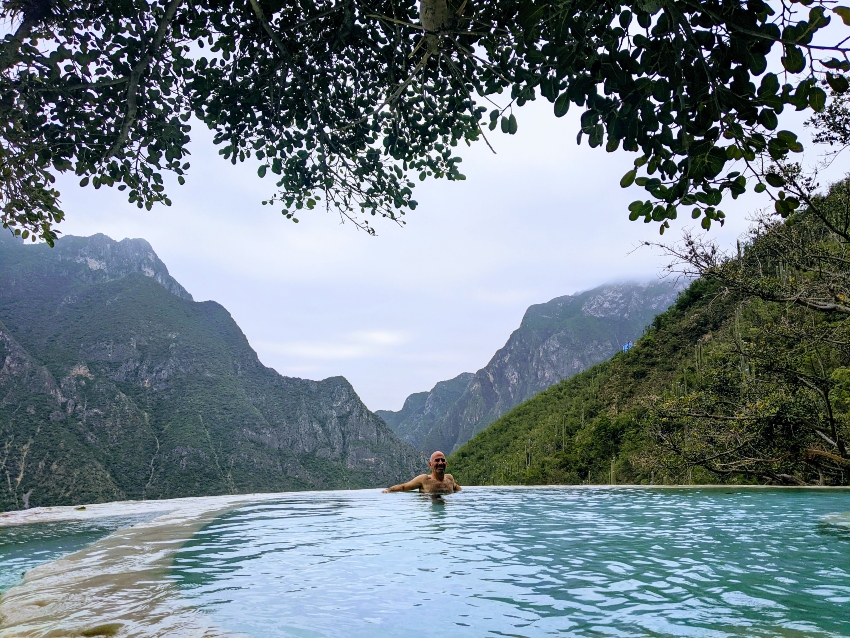I am often asked how much planning goes into my trips. For someone who doesn’t like walking around town, knocking on doors to find an available bed at nine o’clock at night, I would say I’m a pretty thorough planner. That doesn’t mean that I lock myself into a time sensitive itinerary before I leave home, but I have a pretty good idea of how I want the trip to flow.
Get recommendations
All of my planning begins with listening to people tell me about the places they think I must see. I make judgments on how much credence to pay their suggestions based on whether I think we enjoy similar travel experiences. If someone spends their entire holiday in an all inclusive resort, I’m unlikely to pay their recommendations much heed. Likewise, if someone tells me how sick a full moon party in Thailand is, I am most likely to take note to never go to that place.
The best recommendations usually come from people who are from the country they are recommending. The recommendations float around in my head until I hear the place mentioned again. The recommendations coagulate in my head until they become dense enough to garner my attention.
Mark up a map
The first action I take on any suggestions I’ve heard a few times is to do a Google image search. If I want to see myself in one of those pictures, I pull out the Lonely Planet guide and do some reading on it. Most of the places I want to visit have a marker on my Google map of the world. I use a different style of marker to indicate priority, with a yellow star indicating a must see, a red heart indicating a want to see, and a green flag indicating an interest in seeing.

Once I can see all of the markers on my map, I begin to plan my route. What guide book you use is not important. What matters is that you use a guidebook that is written by someone who travels in the style you are comfortable with. When I was married, that was Rick Steves. Now that I am single and traveling with a tighter budget, I use Lonely Planet exclusively.
Read about the destination
I tend to look at all the recommended highlights for a place in the front of the book. If something I read sounds interesting, I’ll add it to the map. In some cases, I will elevate or lower an existing priority. Once I’ve got all my destinations on the map, it’s time to figure out how I will get from one destination to the next.
Plan your transportation to get time estimates
At the end of each chapter for a place, the Lonely Planet includes a guide for getting there and away. Even more useful for me is a website called Rome2Rio. It typically presents a variety of ways in which to get between two places: by plane, car, train, bus, or taxi. Occasionally, it will present possibilities I may not have considered, like a ferry. In addition to showing the hours using each mode of transportation, it displays expected costs.

To explore further, you click on the link for a specific mode, and you are presented with frequency and names of airlines or bus companies that service the route you’re considering. From there I connect to the websites directly to check schedules and pricing. At this stage, however, I am simply getting idea of how much time I will need to travel between destinations.
Most recently, I was looking for a way to get to Patagonia from the lakes region of Chile. The bus route was an overnight ordeal that would have taken 24 hours on the bus. I was immediately drawn to a ferry option that added three days travel time to Patagonia, but it meant seeing the fjords from the perspective of the water, and it would be much more comfortable to walk around a ship instead of being cramped in a bus seat for an entire day.

Once, I’ve figured my route, and the time it will take, I can add it to my calendar. It is easy to move things around, but this quickly tells me whether I have too much or too little planned for the time I have available. From this itinerary, I can book my outgoing and return flights, and other than reading more about my destinations, I won’t do much planning before I depart for my trip.
Book your first night’s accommodation
The one thing I will do before my departing flight and just before each of my destinations is to book my accommodation, at least for the first night. This guarantees I won’t be searching for a place to stay upon my arrival, and it gives me a chance to get a first impression of a place before I decide whether to spend more time or move on.
Once on my trip, I follow this model of booking my first night, but my itinerary will adapt based on my experiences and what I hear from others. Typically, bus tickets can be purchased the day of travel. Depending on the country, train tickets might have to be purchased further in advance. Plane tickets should always be purchased as far in advance as possible, but it is risky as it locks you into an itinerary that can keep you from taking advantage of an activity you may not have had advance knowledge of.
I find it interesting that my planning ends similarly to how it begins, through the suggestions of others. I’ll admit that my most memorable experiences are of things that I didn’t know about before I left so no matter how you plan, be sure to leave your itinerary open for things unknown.

